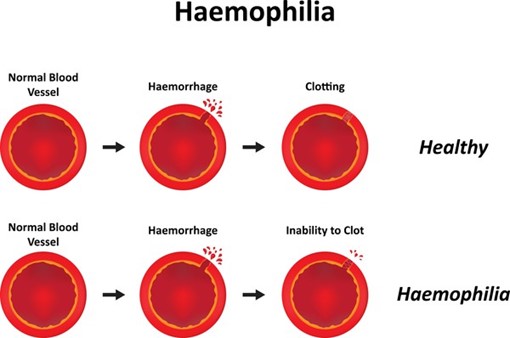A nurse is reinforcing teaching with a school-age child who has hemophilia about participating in school
sports. Which of the following sports should the nurse recommend for the child? (Select all that apply.)
Basketball
Gymnastics
Soccer
Swimming
Correct Answer : D
Swimming is the recommended sport for a school-age child with hemophilia. Hemophilia is a bleeding disorder in which the blood lacks certain clotting factors. Engaging in contact sports or activities with a high risk of injury can increase the chances of bleeding episodes and injury for individuals with hemophilia.
Explanation:
Swimming is a low-impact sport that minimizes the risk of injury and joint stress, making it an ideal choice for children with hemophilia. It provides a cardiovascular workout without subjecting the child to excessive physical stress or the risk of trauma that could lead to bleeding. Swimming also promotes muscle strength and coordination without putting significant pressure on the joints.
Now, let's discuss why the other options are not recommended:
Basketball involves physical contact and has a higher risk of falls, collisions, and potential injuries. These factors increase the likelihood of bleeding episodes for individuals with hemophilia.
Gymnastics also carries a high risk of falls, joint stress, and potential injuries. The impact and demanding movements involved in gymnastics can pose a significant risk for children with hemophilia, leading to bleeding complications.
Soccer is a contact sport that involves running, kicking, and potential collisions with other players. The physical demands and unpredictable nature of the game increase the risk of injury and subsequent bleeding for individuals with hemophilia.
In summary, swimming is the most suitable sport fo r a school-age child with hemophilia due to its low- impact nature and minimal risk of injury. It promotes physical fitness while minimizing the likelihood of bleeding episodes and joint stress.
r a school-age child with hemophilia due to its low- impact nature and minimal risk of injury. It promotes physical fitness while minimizing the likelihood of bleeding episodes and joint stress.
Nursing Test Bank
Naxlex Comprehensive Predictor Exams
Related Questions
Correct Answer is A
Explanation
Choice A reason: Hypertension is a manifestation of increased intracranial pressure because it is part of the Cushing's triad, which is a set of signs that indicate increased intracranial pressure and impaired cerebral perfusion. The other signs of Cushing's triad are bradycardia and irregular respirations.
Choice B reason: Tinnitus is not a manifestation of increased intracranial pressure because it is a symptom of hearing loss, ear infection, or ear damage, not increased intracranial pressurE. Tinnitus is a ringing, buzzing, or hissing sound in the ears that can be caused by various factors such as exposure to loud noise, aging, or medication side effects.
Choice C reason: Hypotension is not a manifestation of increased intracranial pressure because it is a sign of decreased blood pressure, not increased intracranial pressurE. Hypotension can be caused by various factors such as dehydration, blood loss, or shock.
Choice D reason: Tachycardia is not a manifestation of increased intracranial pressure because it is a sign of increased heart rate, not increased intracranial pressurE. Tachycardia can be caused by various factors such as anxiety, fever, or pain.
Correct Answer is C
Explanation
Choice A reason: Mitigation is not the level of the National Response Framework that involves educating the residents about evacuation routes and emergency shelters because it is the level that focuses on reducing or eliminating risks and vulnerabilities before a disaster occurs, such as building levees or dams, enforcing zoning codes, or implementing insurance policies.
Choice B reason: Security is not the level of the National Response Framework that involves educating the residents about evacuation routes and emergency shelters because it is not a level of the framework, but rather a cross-cutting function that supports all levels by ensuring the protection of people, property, and information from threats or hazards.
Choice C reason: Preparedness is the level of the National Response Framework that involves educating the residents about evacuation routes and emergency shelters because it is the level that focuses on enhancing the readiness and capabilities of individuals, organizations, and communities to respond to and recover from a disaster, such as developing plans, conducting trainings, or providing education.
Choice D reason: Response phase is not the level of the National Response Framework that involves educating the residents about evacuation routes and emergency shelters because it is the level that focuses on delivering immediate assistance and resources to save lives, protect property, and meet basic needs during and after a disaster, such as activating emergency operations centers, deploying teams, or providing shelter.
Whether you are a student looking to ace your exams or a practicing nurse seeking to enhance your expertise , our nursing education contents will empower you with the confidence and competence to make a difference in the lives of patients and become a respected leader in the healthcare field.
Visit Naxlex, invest in your future and unlock endless possibilities with our unparalleled nursing education contents today
Report Wrong Answer on the Current Question
Do you disagree with the answer? If yes, what is your expected answer? Explain.
Kindly be descriptive with the issue you are facing.
